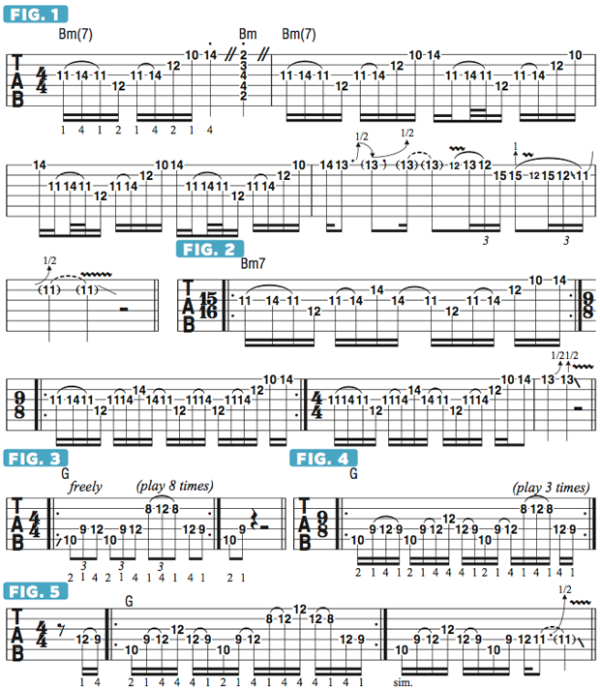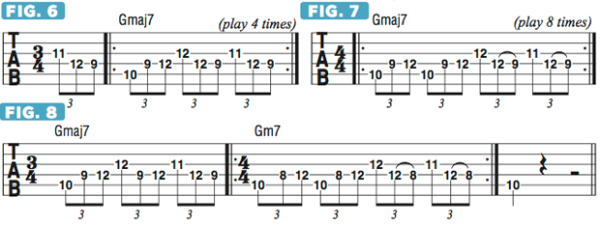How to Play Fast Arpeggio-Based Licks Without Sweep Picking
Marty Friedman demonstrates some cool ways you can achieve the effect of fast arpeggio-based sounds while avoiding the predictability of standard sweep-picking licks.
I’ve often been associated with players that use specific picking techniques, such as sweep picking, economy picking, hybrid picking and so on. In truth, I have no idea what any of these terms mean. Sweep picking does not appeal to me at all.
To my ears, it sounds like, “bdLOOP, bdLoop, bdLOOP, bdLoop,” as notes go up and down, over and over again. It’s nothing more than a fancy technique that guitar players learn so that they can play fast arpeggios up and down.
To my ears, it’s very unmusical. In my music, you will hear some insane, fast arpeggio-based lines, but it’s never simply straight up and down through the arpeggios, the way sweep picking usually is performed. This month, I’d like to demonstrate some cool ways you can achieve the effect of fast arpeggio-based sounds while avoiding the predictability of standard sweep-picking licks.
My preference is to use a little bit of repetitive arpeggio-based lines and then grab some cool notes, bends or vibratos. I try to never lean on any one technique too much and always try to play with an ear toward melody. Playing straight triads up and down is, to me, neither creative nor melodic. Any monkey can learn how to execute a fast technique on the guitar, but technique in and of itself is not music.
FIGURE 1 is based on the notes of a Bm7 arpeggio: B D F# A. In bar 1, I outline the basic melodic “shape.” I begin on the third string with a hammer-pull between F# (11th fret) and A (14th fret). Following the D (fourth string/12th fret), I hammer-on from F# up to A and end the phrase with three ascending notes, B D F#. In bars 2–5, I elaborate on the idea by repeating the lick over several beats, adding a half-step bend and vibrato from the b5 (flatted fifth), F, in bar 4. I end the phrase with a half-step bend from A# to B, which I adorn with some vibrato.
Now that you have the idea, try the same premise, but change the end of the lick. For me, elaboration on a basic idea is the most natural and musical way to play. Incorporating the arpeggio licks into melodic lines is far more interesting than an arpeggio that simply is repeated in an up-and-down fashion.
Let’s wrap up with a few permutations of our initial idea. In FIGURE 2, I change the shape of the lick a little, and the result is odd-metered lines in 15/16 and 9/8 meters. In FIGURES 3-8, I take a basic G triad idea and morph it into Gmaj7 and Gm-maj7 ideas.
I certainly understand why guitar players are into speed. When I first started playing, I heard Alvin Lee—who was notoriously fast—and thought it was the coolest thing I’d ever heard. Since then, I’ve found that playing fast is only cool when you can’t do it. Once you can, you’d rather play something musical.


Get The Pick Newsletter
All the latest guitar news, interviews, lessons, reviews, deals and more, direct to your inbox!









![Joe Bonamassa [left] wears a deep blue suit and polka-dotted shirt and plays his green refin Strat; the late Irish blues legend Rory Gallagher [right] screams and inflicts some punishment on his heavily worn number one Stratocaster.](https://cdn.mos.cms.futurecdn.net/cw28h7UBcTVfTLs7p7eiLe.jpg)
